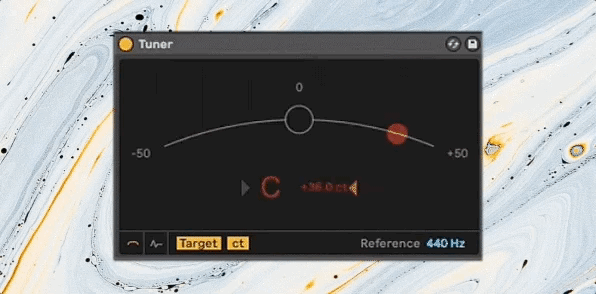Kick sample could be the defining factor of a track on Soundcloud—so if it is not working, your tracks will lack that particular crack.
Choosing the right kick sample is crucial for giving your tracks impact. What makes a kick drum great? And how do you choose the right kicks for your tracks?
There are so many good kick samples out there… finding the right kick is a challenge.
The key is understanding what to listen for.
In this article, I’ll go over 7 ideas that will help you select the best possible kick drum sample for your track.
1. Listen in context
Audition potential kicks in context with your track. A kick may sound great by itself. However keep in mind, your samples have to work with the rest of your combine above everything else.
Even if you haven’t recorded everything yet use whatever you do have to help you audition.
Your kick is such a major factor. It needs as much context as possible to get a sense of what works.
There are many methods to audition samples in your DAW. The simplest method is to add them on separate tracks and mute and un-mute to compare.
Ableton has a built-in function to “hotswap” samples on your timeline or within Drum Racks and Simpler. It’s indicated by the circle and arrows beside files in the browser.
2. Be aware of the envelope
The attack and launch of your kick sounds are crucial in your combine. Kick samples can have all types of envelopes.
From staccato clicks to round bass-like tones, the particular attack and decay qualities of your kick sample must be in line with the rest of your track.
If the kick has too long of a tail or too slow of an attack, you will have to use your sampler’s ADSR to ensure it doesn’t conflict with other elements of your track.
Of course, you could not be able to get it excellent—there’s a limit to what could be done by manipulating a sample’s envelope
3. Pay attention to the EQ spectrum
You should match the overall harmonic content of your kick sample with the rest of your track.
Don’t attempt to shoehorn a sample with a strongly conflicting frequency balance into your track. It could be more bother than it’s value and EQing can only help so much.
Attempt to match things like the distribution of frequencies and the overall amount of saturation.
A busy combine may need a more hyped kick to cut through, however that same sample might be distracting in a minimal composition.
The interaction between your kick and bassline is also crucial. Mixing them well is that much more difficult if the kick and bass occupy exactly the same area.
Keep the frequency spectrum in mind as you select your kick samples and begin thinking about your combine before it even begins—particularly how it relates to other low elements like your bassline.
4. Expect to layer
In some cases, you won’t be able to get the right kick for your track with just a single kick sample.
Don’t be afraid to boost your original sample with other sounds. Layering samples is a strong method.
If you find yourself using radical EQ curves just to get more of a certain sonic quality into your kick, attempt to layer another sample that has the character you’re looking for to get it.
In this example, I’ve layered several kick samples together in an Ableton Live Drum Rack.
I like the attack of the first kick however it does not have quite the low end I need. It’s additionally a bit dry for the track. To repair it I have layered a beefier sub-bass kick with the just ambiance from another kick sample.
With all three together, I’m getting exactly what I need for the kick drum on this track.
Chances are layering will sound more transparent than invasive EQ.
Here are some other sounds to think about layering with your kicks:
- A cracking snare to add some initial attack
- A clap to add some initial smack to your kick
- An 808 style sine wave bass to provide your kicks a nice booming tail
Layering is a key method to not only make your kick sound distinctive, but also make your kicks greater and more impactful in your combine. Try several layered options to search out what works greatest!
5. Tune first
Before making a decision on the right kick sample ensure you’ve taken the time to tune it for your track.
If the fundamental frequency of the kick is at odds with the rest of your track, you’ll have trouble knowing whether it really works.
Use your sampler plugin’s transpose function to ensure your kick sample is in tune.
You must not hard-tune the kick’s fundamental to the track’s tonic, however, try to discover options that improve their harmonic relationship.
Listening in context of the rest of your combine is really necessary here—tweak until it sounds right!
6. Level match
As always when comparing two audio files, ensure you match the levels before you decide.
Small differences in the level have a surprisingly strong effect on how we perceive the strengths of a sound over another.
You don’t want to accidentally miss the suitable kick just because a slightly louder one sounded more lively if you auditioned it.
Watch your meters carefully as you level match so you could be sure you’re making a good comparison between 2 kick samples.
7. Don’t be afraid to start over
Do not keep struggling with a sample that’s not quite right just since you’ve already spent an hour on it.
It’s simple to rationalize your decisions if you’ve gotten attached to them over time. However, sometimes the only method to move forward is to go back to the beginning.
Starting from scratch can actually provide you with a fresh perspective on the whole track. So even if it hurts, attempt not to get too dedicated to a kick that’s just not working.
Hot Tip: Instead of beginning with only one kick sample, set aside a small batch of 5-10 that may work. This way, you’ll have a better backup plan if your first option isn’t working.
Sick Kicks
“Get it right at the source” is a common phrase in mixing for reason. When you don’t have suitable raw materials, no amount of fancy mixing methods will give you the outcomes you need.
That’s why it’s necessary to choose the right kick sample as you build your songs. It doesn’t have to be difficult when you keep these tips in mind.
Now that you know how to choose an excellent kick, get back to your samples folder and find the right kick!




